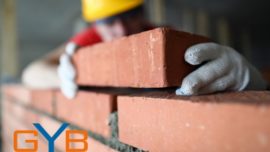The Types of Planning Permission
In the UK there are four main types of planning permission.
- Full Application.
- Householder Application.
- Outline Application.
- Reserved Matters Application.
Full Application
The most common type of planning application, a Full Planning Application requires the developer to submit the full details of the intended development for consideration. The submission will include detailed drawings of the existing and proposed site, along with further information regarding use, position, materials used, access and landscaping.
Full Planning Permission can be granted conditionally, with requirements potentially including: permission being granted for a specified period, samples of materials and product information being requested, or further details of parking arrangements during construction.
This type of planning permission usually covers non-householder projects, and is typically used in new housing developments, engineering and similar works, temporary planning permission, or changes of use of existing buildings or land.
If your project is to extend or alter a single existing residence you may need to make a Householder Application.
Householder Application
Homeowners that wish to carry out work to their home or garden would request planning permission through a Householder Application. Through this method, all details of the proposed development are submitted in one application.
This application is required for projects such as garages and loft conversions, windows and doors, extensions and conservatories, car ports and outbuildings, and fences, gates and garden walls.
Often overlooked, or simply not known by homeowners is the fact that decking, balconies, satellite dishes, and renewable energy fittings such as solar panels and wind turbines also require planning permission before being installed.
In some cases, you may not need to apply for planning permission. This will be a case of the proposed works falling inside or meeting certain detailed limits and conditions, known as a permitted development. The government produced a detailed technical guidance document for Permitted Development for Householders which may help you.
Outline Application
An Outline Application is used prior to a full application is submitted and is intended to decide whether the scale and intention of a proposed development would be acceptable in principle before the full details are put forward. This application is typically used on schemes detailed under the Full Application heading above.
If approved, it will usually be accompanied with conditions which will need to be completed or met prior to a further submission, known as a Reserved Matters Application.
When an application for planning permission made in this way affects the setting of a listed building, or if the site sits in a conservation area the council may request further details to consider. In cases of this nature it may not be practicable to continue with an Outline Application, and a Full Application for planning permission would be required.
Reserved Matters Application
As mentioned above, upon an Outline Application being granted there will need to be a further application for approval of the project specifics. The details must be submitted to the planning authority within three years of the original Outline Application being granted.
The planning authority will require further information to be submitted in the Reserved Matters Application, which will include information relating to layout, scale, access, and appearance of the development. Basically, all of the information not included in the initial Outline Planning Application.
For advice regarding a planning application, enquire today!





